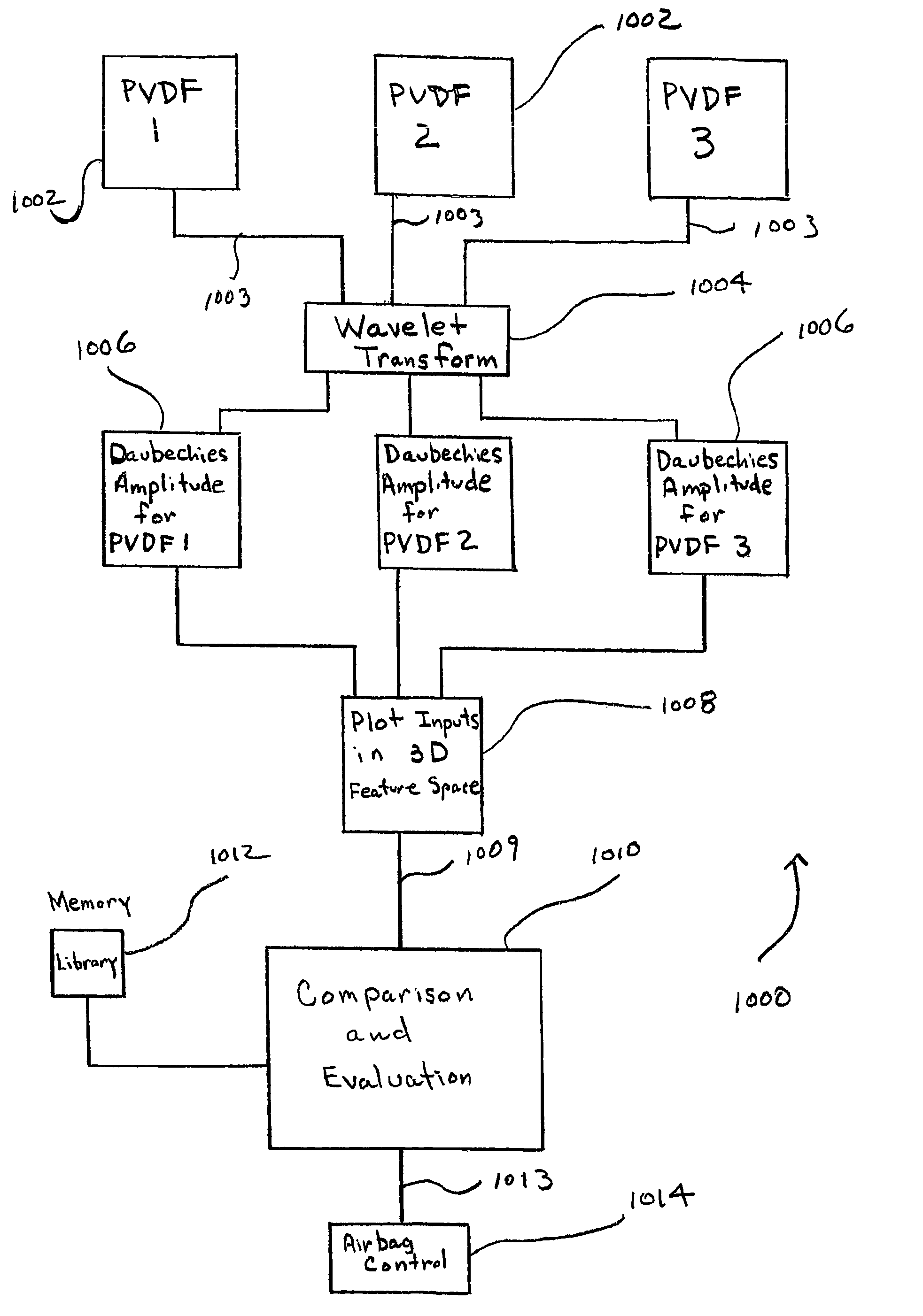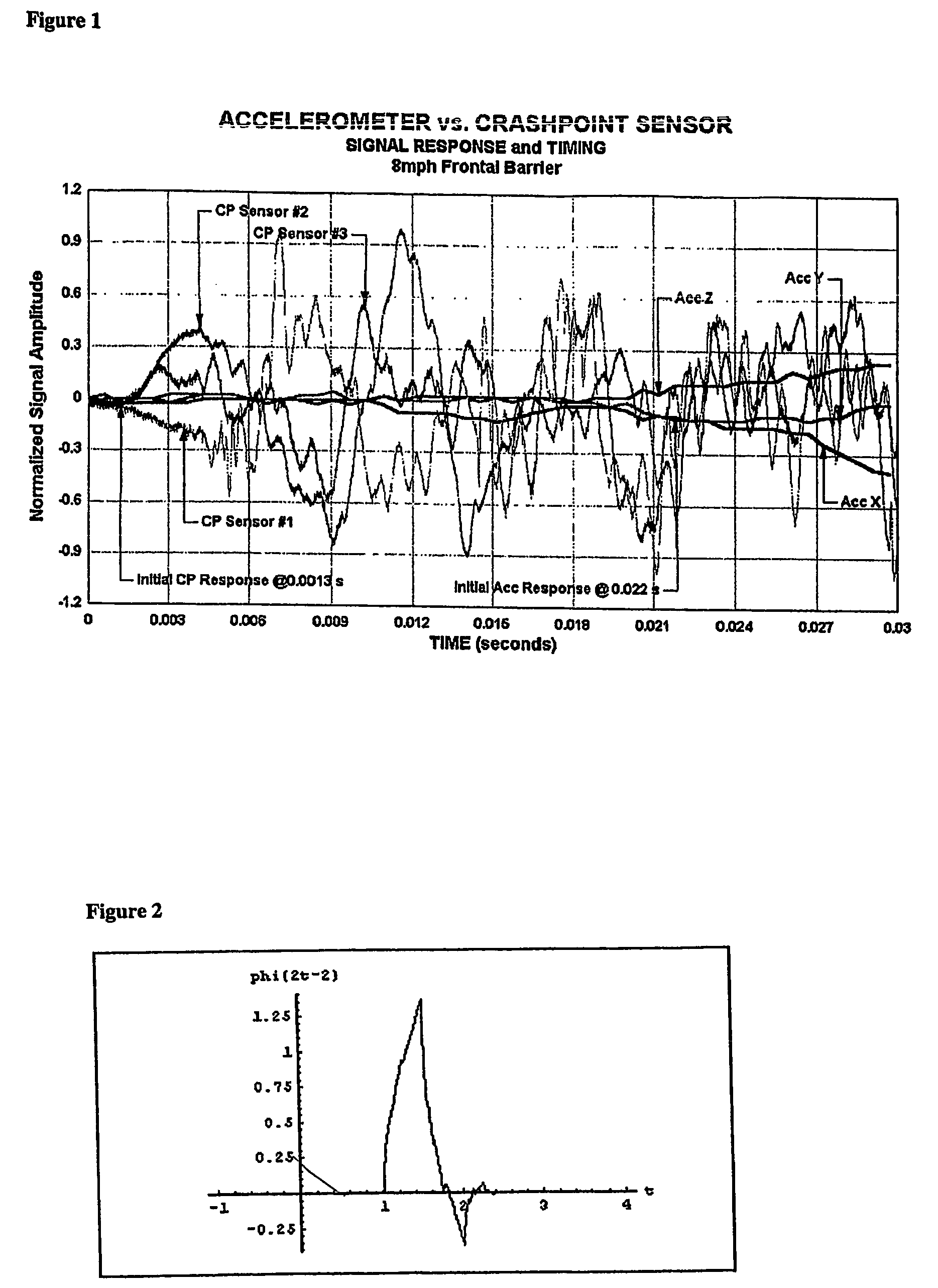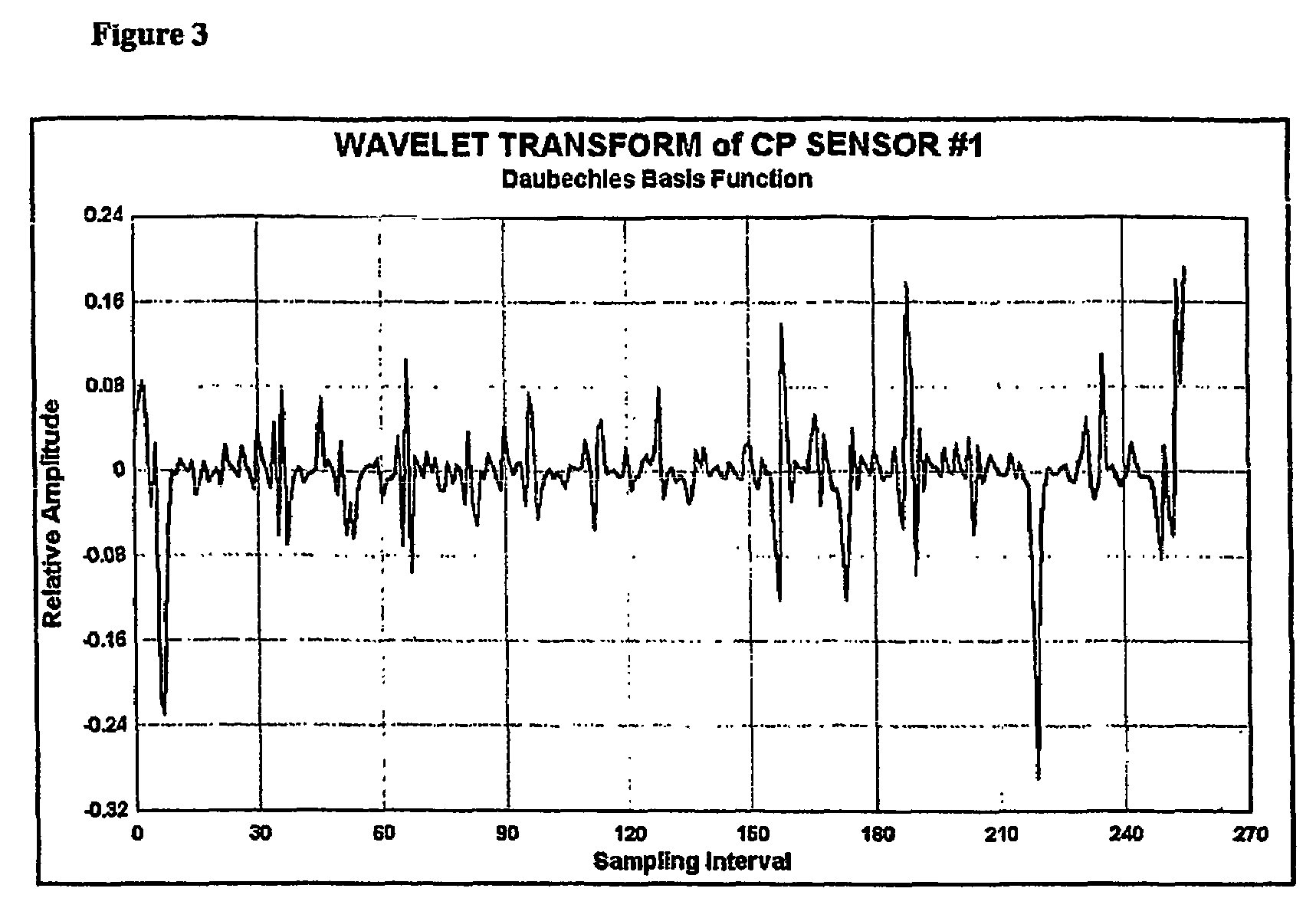Crash sensing via piezoelectric sensors
a piezoelectric sensor and sensor technology, applied in the field of piezoelectric sensors, can solve the problems of reducing reliability, severe delay in the response time of the central accelerometer, and reducing reliability, so as to reduce the impact
- Summary
- Abstract
- Description
- Claims
- Application Information
AI Technical Summary
Benefits of technology
Problems solved by technology
Method used
Image
Examples
Embodiment Construction
[0038]FIG. 9 depicts a flow diagram of a preferred embodiment of the present invention.
[0039]The method 1000 includes providing three PVDF piezoelectric sensors 1002 mounted on the inside surface of a vehicle windshield (see FIG. 9). A sample of a single response 1003 over a predetermined period of time from each piezoelectric sensor 1002 is obtained. An application-specific integrated circuit (not shown) may be utilized to control sampling of the piezoelectric sensors 1002.
[0040]The responses 1003 from the three piezoelectric sensors 1002 are subjected to wavelet analysis via a Daubechies wavelet analysis 1004. The Daubechies wavelet analysis 1004 employs a Daubechies transfer function that performs signal conditioning on the single responses 1003 to produce Daubechies amplitudes 1006 for each piezoelectric sensor 1002.
[0041]The Daubechies amplitudes 1006 are aggregated and the intersection (commonality point) 1109 of the aggregated Daubechies amplitudes 1006 is plotted 1008 in thr...
PUM
 Login to View More
Login to View More Abstract
Description
Claims
Application Information
 Login to View More
Login to View More - R&D
- Intellectual Property
- Life Sciences
- Materials
- Tech Scout
- Unparalleled Data Quality
- Higher Quality Content
- 60% Fewer Hallucinations
Browse by: Latest US Patents, China's latest patents, Technical Efficacy Thesaurus, Application Domain, Technology Topic, Popular Technical Reports.
© 2025 PatSnap. All rights reserved.Legal|Privacy policy|Modern Slavery Act Transparency Statement|Sitemap|About US| Contact US: help@patsnap.com



